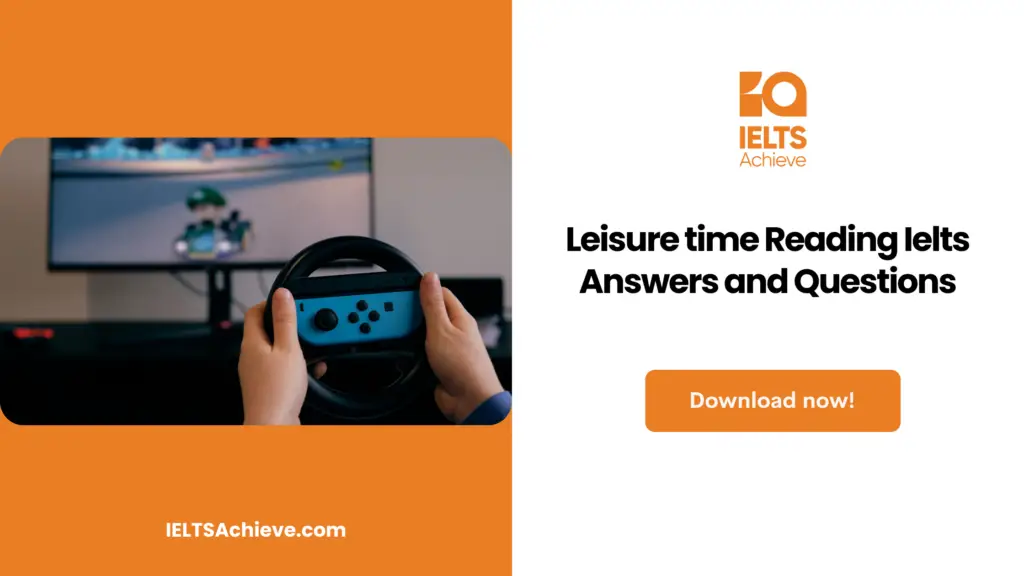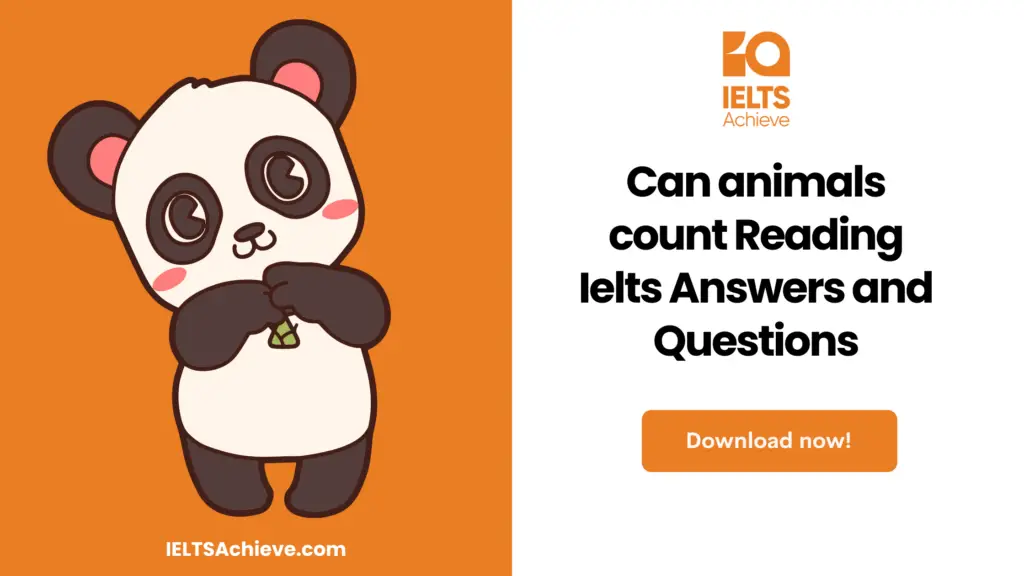The Blog post contains the following IELTS Reading Questions:
- IELTS Reading Table Completion
- IELTS Reading Yes/No/Not Given
Stay informed and prepared for success – Explore our comprehensive Reading Test Info page to get valuable insights, exam format details, and expert tips for mastering the IELTS Reading section.
IELTS Reading Passage: It’s your choice or is it really

It’s your choice or is it really?
A. As we displace from the industrial era to the digital age, public demands on our intellect are no less taxing…
B. We always need to process a broad range of details to make decisions. Sometimes these decisions are insignificant, such as what gelatin to buy. At other times, interests are higher, such as deciding which manifestation to report to the doctor. But, the reality that we are customary to refining huge amounts of information does not mean that we are better at it (Chabris & Simons, 2009). Our sensorial and cerebral systems have organized ways to fault of which we are frequently, maybe rapturously, ignorant.
C. Assume that you are taking a walk in your local city park when a traveler proceeds towards you asking for directions. During the talk, two men taking a door pass between the two of you. If the person asking for directions had swapped places with one of the people taking the door, would you eyed? Analysts advised that you might not. Harvard psychologists Simons and Levi(1998) conducted a field work using this exact set-up and pioneer that the swap in identity went unseen by 7(46.6%) of the 15 participants. This occurrence has been called as ‘changed blindness’ and refers to the trouble that spectator have in noticing switch to visual scenes (e.g. the person swap), when the swap are go with some other visual disturbance(e.g. The passing of the door)
D. Over the past 10 years, the swap blindness occurrence has been copied many times. Mainly noteworthy is a test by Davies and Hine (2007) who deliberate if swap blindness affects bystander identification. In Particular, participants were presented with a video of a housebreaking. In the video, a man entered a house, walking via the various rooms and putting precious things into a rucksack. But, the identity of the robber swapped after the first half of the record while the beginning robber was out of sight. Out of the 80 participants, 49(61%) did not eye the swap of the robber’s identity, advising that swap blindness may be serious suggestions from criminal proceedings.
E. To most of us, it looks strange that people could miss such clear swaps while they are paying full attention. But, to catch those swaps, attention must be decided on the swapping characteristics. In the study narrated above, participants were likely not to have anticipated the swap to occur, and so their attention may have been concentrated on the valuables the robber was thefting, rather than the robber.
F. Drawing from swap blindness analysis, researchers have come to the end that we discern the world with much less information than formerly thought (Johansson, Hall, & Sikstrom, 2008). Rather than observe all of the visual information that encircle us, we look to focus our attention only on those characteristics that are now meaningful or major, ignoring those that are immaterial to our current requirements and goals. Thus at any given time, our portrayal of the world that encircles us is primitive and incomplete, making it possible for changes or trickeries to go unknown(Chabris & Simons, 2010).
G. Given the struggles people have in eyed swaps to visual stimuli, one may awe what would occur if these swaps anxious the decisions people make. To inspect option blindness, Hall and colleagues (2010) invited supermarket consumers to sample two various kinds of jams and teas. After participants had tasted or smelled both samples, they designated which one they picked. One half of the trails, but these were samples of the non-chosen jam or tea. As await, only about one-third of the participants perceive this trickery. Based on these findings, Hall and colleagues suggest that choice blindness is an occurrence that happens not only for choices involving visual material, but also for choices involving audiovisual and aromatic details.
H. Latterly, the occurrence has also been copied for option entail audible stimuli (Sauerland, Sagana, & Otgaar, 2012). In Particular, participants had to hear three pairs of vocals and decide for each pair which vocal they found more commiserating or more criminal. The vocal was then presented again: but, the result was operated for the second vocal pair and participants were presented with the neglected vocal. Copying the findings by Hall and colleagues, only 29% of the participants find out this swap.
I. Merckelbach, Jelicic, and Pieters (2011) look into choice blindness for strength rating of one’s own psychological manifestation. Their participants had to rate the regularity with which they skilled 90 common manifestations (e.g. anxiety, lack of concentration, stress, headaches etc.) on a 5-point scale. Prior to a check out interview the analysts blew up ratings for two manifestations by two points. For illustrate , when participants had rated their ardor of shyness, as 2 (i.e. occasionally), it was swapped to 4(i.e. All the time). This time, more than half (57%) of the 28 participants were blind to the manifestation rating rapid increase and accepted it as their own manifestation strength rating; blindness is not limited to recent liking selections, but can also happen for strength and repetition.
J. Jointly, this reveals that these studies advise that option blindness can happen in a broad variety of circumstances and can have serious suggestion for medical and legal outcomes. Future inquiry is required to control how, in those circumstances, option blindness can be avoided.
Unlock your full potential in the IELTS Reading section – Visit our IELTS Reading Practice Question Answer page now!
Recommended Questions:
Renewable Energy IELTS Reading Question with Answer
IELTS Reading Questions: it’s your choice or is it really?
Question 1 – 5
Do the following statements agree with the information given in the Reading Passage? In following statements below, choose
YES if the statement agrees with the information
NO if the statement contradicts the information
NOT GIVEN if it is impossible to say what the writer thinks about this
- Doctors make decisions according to the symptoms that a patient describes.
- Our ability to deal with a lot of input material has improved over time.
- We tend to know when we have made an error of judgment.
- A legal trial could be significantly affected by change blindness.
- Scientists have concluded that we try to take in as much detail as possible from our surroundings.
Want to excel in identifying the writer’s views and claims? Click here to explore our in-depth guide on how to accurately determine Yes, No, or Not Given in the IELTS Reading section.
Question 6 – 10
- Complete the table below.
- Choose NO MORE THAN TWO WORDS from the text for each answer.
Experiments in change blindness
| Researchers | Purpose of experiment | Situation for participants | Focus of participants attention | Percentage unaware of identity |
| Simons & Levi 1998 | To illustrate change blindness caused by a 6_____ such as an object. | Giving 7____ to a stranger | The movement of 8________ | 46.6% |
| Davies & Hine, 2007 | To assess the impact of change blindness on 9 _______ by eyewitnesses | Watching a burglary | The collection of 10 _______ | 61% |
Boost your performance in Summary, Notes, Table, and Flowchart Completion tasks. Click here to explore our detailed guide and learn how to effectively complete summaries, notes, tables, and flowcharts in the IELTS Reading section.
Question 11 – 12
- Choose TWO letters, A-E.
- Which TWO statements are true for both the supermarket and voice experiments?
A. The researchers focused on non-visual material.
B. The participants were asked to explain their preferences.
C.Some of the choices made by participants were altered.
D.The participants were influenced by each other’s choices.
E. Percentage results were surprisingly low
Question 13 – 14
- Choose TWO letters, A-E
- Which TWO statements are true for the psychology experiment conducted by Merckelbach, Jelicic, and Pieters?
- The participants had to select their two most common symptoms.
- The participants gave each symptom a 1-5 rating.
- Shyness proves to be the most highly rated symptom.
- The participants changed their minds about some of their ratings.
- The researchers focused on the strength and regularity of symptoms.
Unlock your full potential in the IELTS Reading section – Visit our IELTS Reading Practice Question Answer page now!
Recommended Questions:
Renewable Energy IELTS Reading Question with Answer
It’s your choice or is it really? Reading Answers
1.Not given
2.No
3.No
4.Yes
5.No
6.Visual disturbance
7.(some) directions
8.a/the door
9. Identification
10.(the/some) valuables(precious)
11.A
12.C
13.B
14.E

We hope you found this post useful in helping you to study for the IELTS Test. If you have any questions please let us know in the comments below or on the Facebook page.
The best way to keep up to date with posts like this is to like us on Facebook, then follow us on Instagram and Pinterest. If you need help preparing for the IELTS Test, join the IELTS Achieve Academy and see how we can assist you to achieve your desired band score. We offer an essay correction service, mock exams and online courses.


